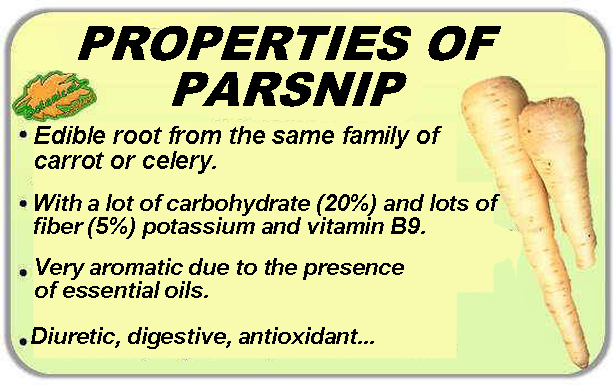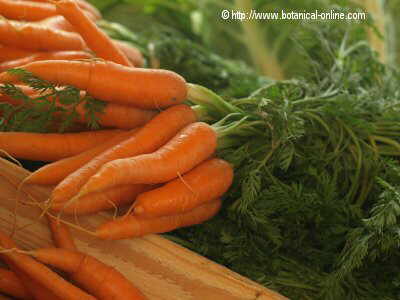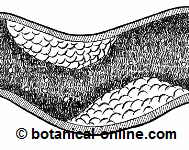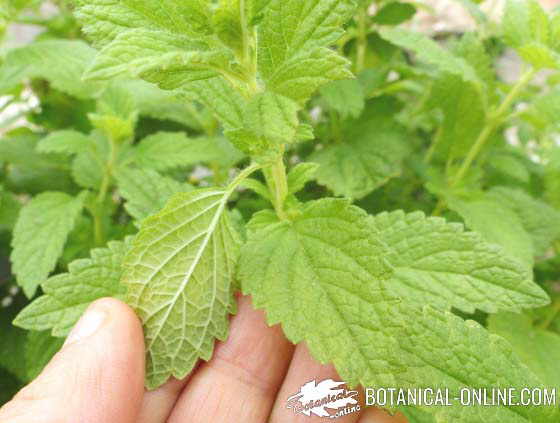Contents
Medicinal properties of parsnip
Medicinal components of parsnip

In addition to its nutrient content, parsnip has other substances, called phytochemicals, that contribute more properties than purely food to this food. Among its phytochemicals it is worth mentioning its essential oil (88% composed of terpinolene and myristicin), and to a lesser extent, mono and sesquiterpenes.
Other very prominent components of the root are its content in quercitin, lignans (of the type: secoisolariciresinol and matairestinol) and furanocoumarins (such as bergapten).
Parsnip aroma properties
The parsnip essential oil, although it is found in little concentration in the root, is the one that provides much of its aromatic flavor, and may have some effect on the body.
This essential oil is rich in terpinolene, with antioxidant, antinitrosaminic properties; and in myristicin, with analgesic, anti-inflammatory, antioxidant, antidepressant, diuretic and uterotonic properties.
Certain components of its essential oil, mainly myristicin, can produce psychoactive, hypnotic or even hallucinogenic effects, although it contains them in such a small amount, that this effect is unlikely to occur.
Parsnip for the digestive system

Parsnip is a great food for the digestive system, because it is light and easy to digest, and because it provides a large amount of fiber with prebiotic properties, to increase the healthy intestinal flora of our intestines. Eating parsnip is appropriate after episodes of diarrhea or taking antibiotics, to help regenerate the intestinal flora.
In addition to fiber, the parsnip root also has sulfur components with antiseptic properties that help control intestinal putrefactions, being, overall, a very suitable food in cases of constipation.
Complementing this effect, the essential oils of the plant, mainly terpinolene, decrease the formation of nitrosamines in the intestine, components that are produced during digestion in the intestine of red meat and processed meat, closely related to cancer of colon.
Parsnip for cholesterol
Parsnip is really a very fibrous food, due to its high fiber content (5g per 100g). A large parsnip (200g) contains 10g of fiber, equivalent to ⅓ of all the recommended fiber per day. This vegetable contains as much fiber as 5 times more fiber than lettuce, or twice as much fiber as a carrot.
Due to the undoubted role that fiber has in lowering cholesterol, the consumption of this food is highly recommended in people who must lower their blood lipid level. As always, within some healthy diet guidelines.
A diet rich in fiber, with plant foods such as parsnips, in addition to lowering high cholesterol levels, prevents obesity and associated diseases such as type 2 diabetes and certain types of cancer.
Parsnip as a diuretic food
Parsnip is very rich in diuretic and antioxidant components, among which is its essential oil and its high potassium content. These components are very suitable to help the kidneys and the liver to eliminate substances from the body, such as excess sodium, which when accumulated produces fluid retention.
Parsnip for hypertension and heart disease
In case of hypertension, it is recommended to increase the contribution in potassium, magnesium and calcium (all of them intervene in the contraction of the muscles, such as the heart muscle). Of these three minerals, parsnip is very rich in potassium and magnesium, being another suitable vegetable in the diet for hypertension, especially if you take medications for hypertension, which increase the elimination of potassium.
For the same reason, it is a food that is recommended in diets for athletes.

Parsnip in Traditional Chinese Medicine
Traditional Chinese Medicine attributes parsnips properties to warm the body. Due to its natural sweet flavor, it nourishes the earth element, represented by the stomach, spleen and pancreas.
This is consistent with food color theory, which attributes properties for the digestive system to foods that are yellow or orange in color, such as parsnips.
![]() More information on parsnip
More information on parsnip






